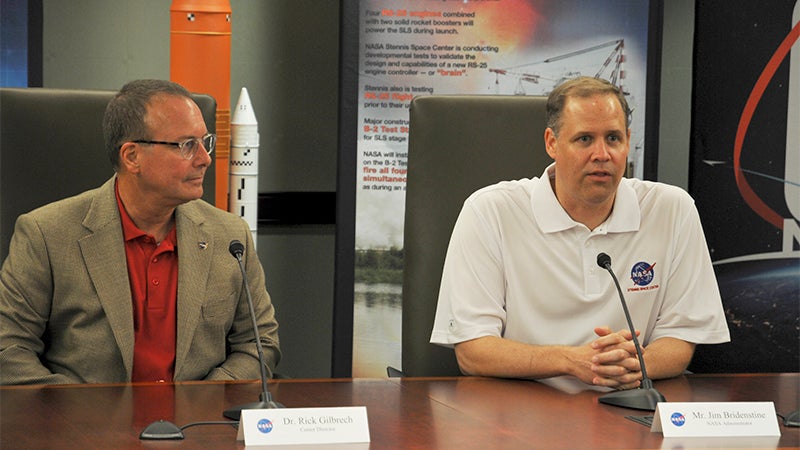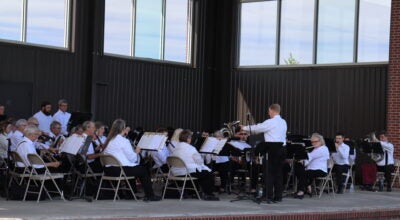NASA’s new administrator stops in at Stennis Space Center
Published 7:00 am Wednesday, August 15, 2018

- Stennis Director Dr. Rick Gilbrech and NASA Administrator Jim Bridenstine attended a press conference on Tuesday to discuss the future of NASA. Photo by Leah McEwen
NASA Administrator Jim Bridenstine visited John C. Stennis Space Center Tuesday morning to tour the facility and view an RS-25 engine test.
Bridenstine is the 13th administrator of NASA and was sworn in on April 23, 2018. Bridenstine was previously a member of Congress and represented Oklahoma’s First Congressional District in the U.S. House of Representatives. After being sworn into office, Bridenstine began a tour of the nation’s NASA facilities, which brought him to Stennis – just in time for the engine test.
Before the test, Bridenstine met with members of the press to answer questions in regard to how NASA affects people on a day-to-day basis, his administration and future plans for the program.
Bridenstine was first asked what he would say to those who are concerned about government spending, and concerned whether the NASA program is worth the money put into it. Bridenstine said that technology and data developed by NASA has been used to help those in various careers, and on a daily basis. Bridenstine added that the ability to forecast the weather, for instance, comes from technology and research funded by NASA.
Bridenstine was also asked about his opinion on Trump’s “Space Force.” Bridenstine said NASA was originally founded for the purpose of exploration, science and discovery – which is unrelated to a branch of the military, such as the Space Force. However, he said during his time in Congress, he voted for the “Space Force” three times and had overwhelming support. He said as technology progresses, space based attacks from other countries will become a threat for the United States. In fact, he said other nations are already labeling space as America’s Achilles-heel. Bridenstine said protecting all areas above the United States is imperative for national security.
Bridenstine was also asked about the Mars mission. Bridenstine said astronauts who would take part in the Mars mission have not yet been chosen, since the agency is currently focused on logistics. He said the trip to Mars would take between eight to nine months, and because of the difference in the Earth’s orbit and Mars’ orbit, those sent to Mars would be unable to return for two years. Because of this, he said it is important to be aware of every contingency before moving forward to ensure the program goes well.





